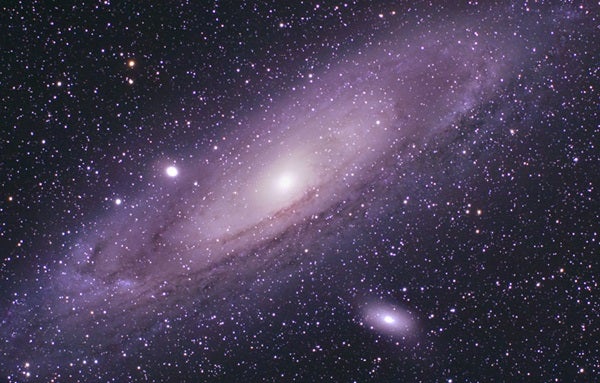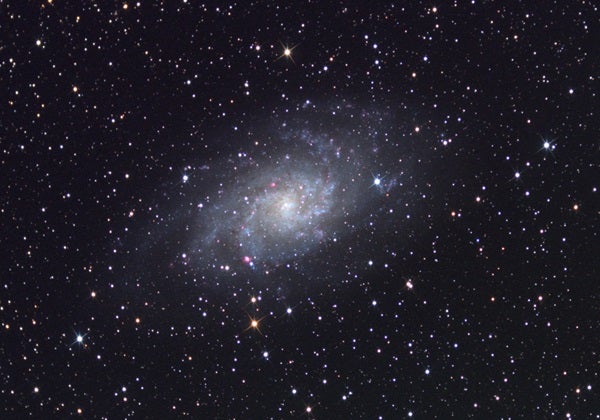Astronomers have long recognized that many spiral galaxies, including our own Milky Way, sport black holes in their centers that weigh millions of Suns. Determining these masses usually requires detailed observations of stellar motions in each galaxy’s heart. “That limits you to the nearest 30 or 40 spirals, even with the Hubble Space Telescope,” says Marc Seigar at the University of Arkansas, Little Rock.
Seigar thinks he’s found an easier way, one that can be extended to as far as spiral structure can be detected. He led a team that established a relationship between the mass of a galaxy’s central black hole and the pitch angle of its spiral arms, a measure of how tightly they wind up.
The researchers looked at spiral arm angles for 25 galaxies with central black-hole masses established in other studies. They also included the Milky Way and the Andromeda Galaxy (M31) by using previously established pitch angles for these galaxies.
Seigar next hopes to apply the technique to very distant galaxies. “We can detect spiral structure in galaxies 8 billion light-years away, maybe a little farther,” he says. “Using this simple relationship, we can establish the average black-hole mass at different distances and watch them grow as the universe gets older.”
Such a study would reveal how supermassive black holes evolved through time, at least in a statistical sense. The team notes that Hubble images of some 700 distant spiral galaxies are now available as part of the Great Observatories Origins Deep Survey, and suggests the time is ripe for such a study.
Seigar presented the results today at the American Astronomical Society meeting in St. Louis. The full paper appeared in the May 10 Astrophysical Journal Letters.











